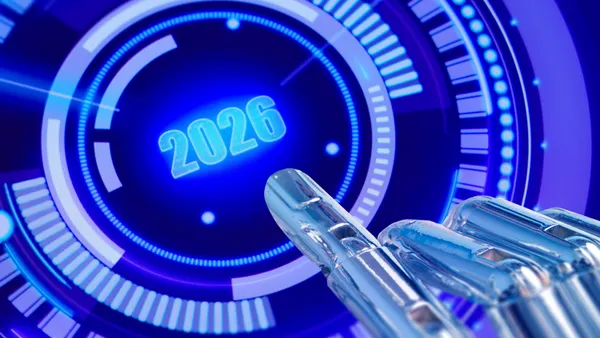ORLANDO, Fla. — How will automation and other technology innovations reshape what your workplace will look like in a few years? Daryl Plummer, vice president and Gartner fellow, outlined the analyst firm's top predictions for 2020 and beyond, speaking at the Gartner IT Symposium/Xpo on Tuesday.
1. By 2023, technology will help triple the number of employed people with disabilities.
The evolution of AI and assistive technology, Gartner says, will lead to an increase in people with disabilities performing tasks they did not previously have access to.
Empowering a broader workforce with the tools to build software or perform other tasks within technology might signal hope for employers crunched to meet their talent needs.
Companies which employ people with disabilities can expect retention rates to rise.
But in order for that evolution to take place, CIOs must "make it a core principle to build accessibility into everything they do," and look for for scalable accommodation opportunities across the business, Plummer said.
2. In the next four years, "bring your own enhancement" policies will enable augmented humanity at a third of IT organizations.
From neurological implants to wearable technology, in the future more companies will address — to their advantage — employees ability to augment efficiency of capability through technology.
Much like employers encourage staffers to use their own computers if they wish, corporate policies will emerge as a response to human enhancement tools at the office.
Early examples of this trend include implanted near-field communications (NFC) chips that allow humans to unlock devices and make payments without the need for additional interfaces.
3. Mobile-accessible cryptocurrency accounts will be used by half of unbanked smartphone users in the next six years.
With 71% percent of the world expected to have a mobile internet connection by 2024, and the successes of mobile banking in developing countries, Gartner expects mobile and blockchain technologies will join to bring about more financial inclusion.
For executives, that means new market opportunities. One-third of the world's population lacks access to a bank account, and will likely enter blockchain-based platforms once the technology evolves.
To respond to the trend Plummer said, CIOs must adapt, opening up every customer application to accept payments in cryptocurrency.
4. Four of the G7 countries will set up self-regulating associations for "oversight of AI and machine learning" by 2023.
One prediction helps explain the projected uptick in AI governance and oversight.
Humanity can expect hundreds or thousands of individuals to face non-trivial AI-produced harm by 2021, according to Plummer.
As these regulatory entities come together, CIOs should monitor development standards and certifications, as well as develop internal standards when it comes to AI production.
5. By 2023, four in 10 workers will orchestrate their own workplace application experiences and capabilities.
Workers like their office to feel a bit like home, with tools that resemble the ones they use for leisure. This means apps "will have to work like people work," Plummer said.
To get there, expect the rise of citizen developers to continue, with quicker and more frequent product delivery that serves the ultimate user of the platform.
A lot of that shift in worker experience will happen by APIs and integrations. Gartner expects vendors will expose 90% of their capabilities through APIs.
6. Digital transformation initiatives will take twice as long, cost twice as much, through 2021.
Planning, deploying and scaling a digital transformation strategy "is taking longer and costing more,” Plummer said. Next year, the percentage of companies stuck in the scaling phase of digital maturity is projected to rise by 4%.
In most organizations, the gap between reality and digital ambition is expanding. To meet their goals, the C-suite can benefit from an iterative approach that connects one project to the next, bringing momentum to the digital transformation journey.
"Everybody's moving slower that they expected," Plummer said. "But everyone should be moving."













